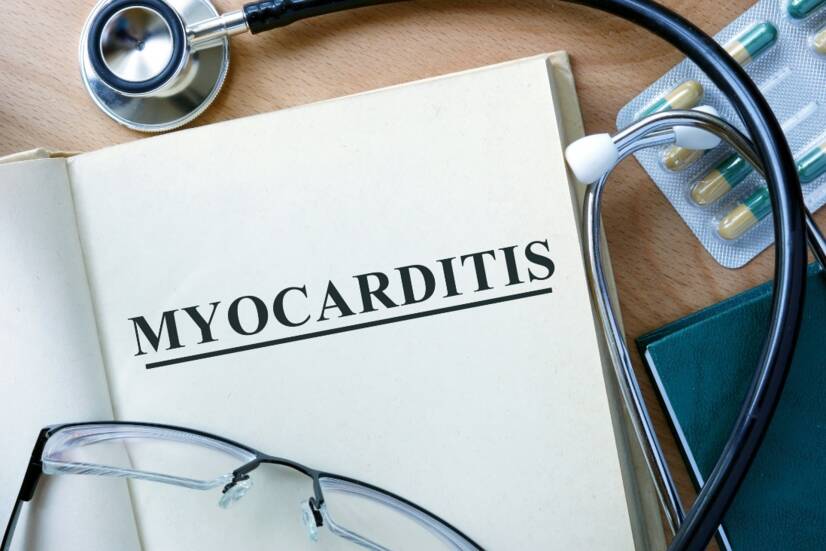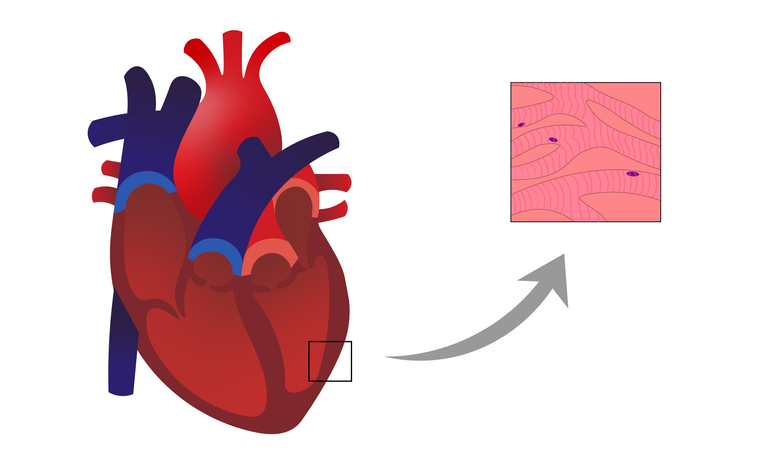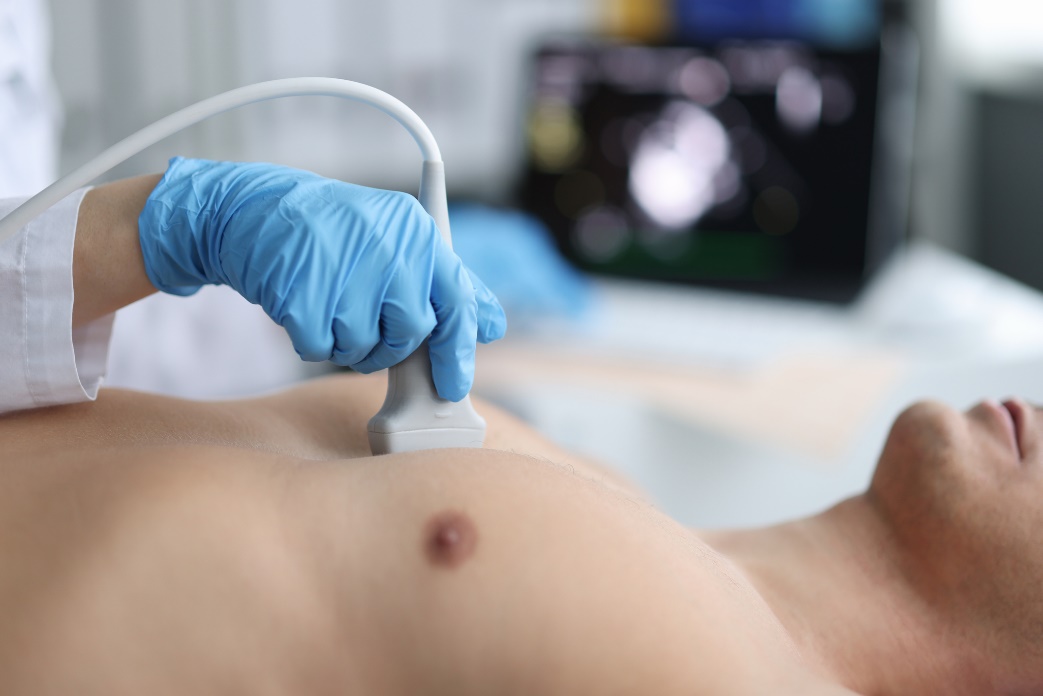- solen.cz - Fulminant myocarditis. Solen. MUDr. Marcela Vránová
- casopisvnitrnilekarstvi.cz - Myocarditis. Internal medicine. J. Vitovec, J. Lipoldova
- solen.cz - Viral mycarditis - a mysterious disease. Solen. prof. MUDr. Jiří Kvasnička, CSc.
- healthline.com - Myocarditis: inflammation of the heart. Healthline
Myocarditis: inflammation of the heart muscle. Myocardial infarction, a type of heart disease

Myocarditis is an inflammatory process of the heart muscle. Inflammation of the heart muscle can cause a decrease in heart function. What are the causes, first symptoms and current treatment options for myocarditis?
Most common symptoms
- Muscle Pain
- Malaise
- Chest pain
- Headache
- Sore Throat
- Joint Pain
- Fever
- Spirituality
- Diarrhoea
- Blue leather
- Lung Island
- Swelling of the limbs
- The Island
- Muscle weakness
- Pressure on the chest
- Fatigue
- Damp cough
- Vomiting
- Coughing up mucus
- Increased body temperature
Characteristics
Myocarditis is an inflammation of the heart muscle that can cause impaired heart function.
The heart muscle forms the middle massive layer of the heart. Its inflammation increases the risk of impaired heart function when pumping blood. The main symptoms include chest pain, shortness of breath, palpitations and irregular heartbeat.
For the etiology of myocarditis, diagnosis, symptoms, treatment and much more information, see the article.
Heart muscle in a nutshell
The heart is a hollow, fist-sized muscular organ located in the chest. The main function of the heart is to pump oxygenated blood throughout a person's circulatory system.
The rhythmic contractions of the heart muscle allow blood to flow through the body's vascular system.
The heart consists of three basic layers:
- the epicardium, the upper shell of the heart
- the middle massive layer of myocardium (muscle)
- the inner layer of tissue, the endocardium
The myocardium is made up of a combination of smooth and striated muscle. The basic cell is called a cardiomyocyte.
When the myocardium is inflamed, its function is impaired, increasing the risk of being unable to pump blood and nutrients to the body properly.
Myocarditis
Myocarditis is an inflammatory disease of the heart muscle that results in impaired heart function. The most common cause is a viral infection. However, it has a number of infectious and non-infectious causes.
Myocarditis is a disease characterized by an inflammatory infiltrate of the heart muscle with necrosis or degeneration of cardiomyocytes.
Myocarditis is manifested primarily by chest pain, shortness of breath, increased fatigue, and rapid or irregular heartbeat.
However, the clinical symptoms may be variable and less specific. The first objective sign of myocarditis is usually a faint ECG (electrocardiographic) pathology.
Myocarditis can have an asymptomatic mild course to the most severe forms leading to heart failure.
Myocarditis can cause acute heart failure in up to 10% of patients. However, with early diagnosis and sufficiently strong therapy, 90% of patients recover fully with minimal long-term health consequences.
Causes
Finding the exact cause can be quite challenging if myocarditis is diagnosed at a late stage of the disease. The most common cause of inflammation of the heart muscle is a viral infection.
Myocarditis is mainly divided into infectious and non-infectious myocarditis according to the aetiology of its onset.
Infectious myocarditis
The causative agents of this disease are mainly viruses, bacteria and fungi. The most common viral non-infectious myocarditis is caused by influenza virus, hepatitis virus, mononucleosis virus, adenovirus, parvovirus, HIV, Coxsackie B or currently SARS virus - covid 19.
Bacterial myocarditis is also known as suppurative myocarditis. It is mainly caused by Staphylococcus aureus and Staphylococus pyogenes, Boreelia burgdorferi, Chlamydia or Mycoplasma and others.
Yeast infections caused by Candida, Aspergillus and other histoplasma fungi may cause myocarditis more rarely, especially in persons with weakened immune systems.
Non-infectious myocarditis
Inflammation of the heart muscle can be triggered by the use of drugs, exposure to certain chemicals or heavy metals (copper, iron, lead) or, rarely, as a side effect of a reaction to pharmacological treatment.
However, the cause cannot always be determined. It is therefore referred to as idiopathic myocarditis (disease without a known cause).
Myocarditis can arise as a result of diseases and disorders such as systemic lupus, systemic scleroderma, rheumatoid arthritis, Kawasaki disease and other systemic autoimmune diseases.

Symptoms
In some cases, the course of the disease may be asymptomatic or mild. The most common clinical signs include palpitations, chest pain, excessive fatigue and increased shortness of breath.
Symptoms are mainly determined by the cause of the inflammatory process. Weakness, fever, sore throat, diarrhoea and other associated signs of infection are therefore common.
Sometimes the symptoms of myocarditis can be similar to a heart attack. If you experience unexplained chest pain and shortness of breath, seek medical attention immediately.
Myocarditis is divided into an acute phase (1-14 days) and a chronic phase (over 2 weeks) due to the pathogenesis and course of the disease.
Symptoms and manifestations of myocarditis:
- chest pain
- increased fatigue and weakness
- heart palpitations
- rapid heartbeat
- irregular heartbeat - arrhythmia
- feeling of lack of air
- shortness of breath
- nausea and lack of appetite
- increased body temperature
- swelling of the legs (especially ankles)
- muscle and joint pain
Diagnostics
The diagnostic significance is the finding of a pathological LGE lesion (postcontrast saturation), which indicates inflammatory non-physiological infiltration of the myocardium, degeneration of cardiomyocytes with possible signs of necrosis or fibrosis.
The left ventricular free wall is most commonly affected.
The exact diagnostic procedure is determined by the examining physician after taking a comprehensive history, a basic general examination and assessment of the patient's clinical symptoms.
The basic principle is the collection of a blood sample and its laboratory evaluation to confirm or refute the presence of viruses or bacteria in the body. The levels of inflammatory markers determining the presence of inflammation in the body are also detected.
The basic diagnosis of myocarditis includes an ECG (electrocardiography). The ECG will rule out possible arrhythmias, valvular defects and other causes of the patient's clinical symptoms.
The electrical activity of the heart is measured. The result is an ECG curve that determines the waves, oscillations and intervals of the individual cardiac impulses.
The ECG is a quick and painless examination that shows the electrical excitations of the myocardium. It can thus detect pathological heart rhythms.
Physical imaging methods include X-ray and, in particular, MRI (magnetic resonance imaging) or ultrasound echocardiography.
These examinations are used to view the internal structures of the heart in detail. They describe the size, condition and structure of the heart muscle. They reveal any valvular defects, blood clots or unwanted fluid in the heart area.
In some cases, a cardiac catheterisation is performed. In this procedure, a small special tube (catheter) is inserted into the venous system and guided through the blood vessels directly into the heart. The examination also rules out coronary syndrome.
Sometimes the doctor will perform a biopsy of the cardiac endomyocardium for laboratory analysis of the tissue and to check for the presence of an inflammatory process and infection. Biopsy testing has a high specificity for determining the cause of the disease.

Prevention of myocarditis
Prevention of myocarditis is limited. However, there are certain factors and health recommendations that should be followed to reduce the risk of myocarditis.
Early diagnosis is the key to preventing the spread of the disease and the severe course of myocarditis. It is necessary to seek medical attention at the first signs.
Adequate convalescence and rest after overcoming various other infections of the body is also an important factor.
Myocarditis prevention factors:
- Maintaining personal hygiene
- Dietary and nutritional measures
- Prevention of infection with infectious diseases
- Adequate convalescence after an infection
- Treatment of all existing diagnoses
- Minimising exposure to ticks
- Adequate intake of necessary vitamins and minerals
- Possibility to benefit from vaccinations (against influenza, covid-19)
Prognosis of myocarditis
Most patients overcome viral myocarditis with expert treatment without serious consequences. In some patients, the disease may progress to chronic myocarditis.
The prognosis of patients depends most on early diagnosis and treatment of the causative disease itself (infection, systemic disease).
Poor prognosis with a high mortality rate is especially in acute myocarditis of newborns.
How it is treated: Myocarditis
How is myocarditis treated? Drugs, antibiotics and regimen
Show moreMyocarditis is treated by
Other names
Interesting resources
Related










